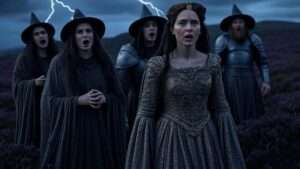Twelfth Night A Festive Tale of Mistaken Identities
William Shakespeare’s “Twelfth Night,” written around 1601-1602, is a delightful comedy set in the fictional Illyria. The play follows Viola, who disguises herself as Cesario after a shipwreck, sparking a web of mistaken identities and romantic entanglements. Her twin brother Sebastian adds to the confusion, while the lovesick Duke Orsino and the sharp-witted Olivia navigate unrequited affections. With humor, music, and the antics of characters like Malvolio and Sir Toby Belch, Shakespeare explores themes of love, gender, and self-discovery. This festive play, tied to the Twelfth Night holiday, ends in joyful reunions and marriages, cementing its status as a classic.
Twelfth Night Comedy, Music, and Romantic Twists
William Shakespeare’s “Twelfth Night” (1601-1602) blends humor and music in the enchanting Illyrian setting. Viola’s disguise as Cesario fuels a comedic love triangle with Duke Orsino and Olivia, complicated by her lost twin Sebastian. The subplot features Malvolio’s humiliation by Sir Toby and Maria’s prank, showcasing wit and folly. Themes of disguise, desire, and mistaken identity unfold, culminating in a harmonious resolution with marriages and reconciliation. Rich with festive spirit, the play’s songs and jesters like Feste enhance its charm. This enduring work delights audiences, reflecting Shakespeare’s mastery of romantic comedy and human quirks.

All Twelfth Night Related Post

Unraveling Characterization in Twelfth Night: Shakespeare’s Masterful Insights into Identity and Deception

7 Stunning Glass Curio Display Ideas to Showcase Your Shakespearean Collectibles

Macbeth Act 1 Summary: Unraveling Ambition and Betrayal in Shakespeare’s Tragedy

Twelfth Night Summary: Unraveling Shakespeare’s Timeless Comedy of Love and Mistaken Identities

